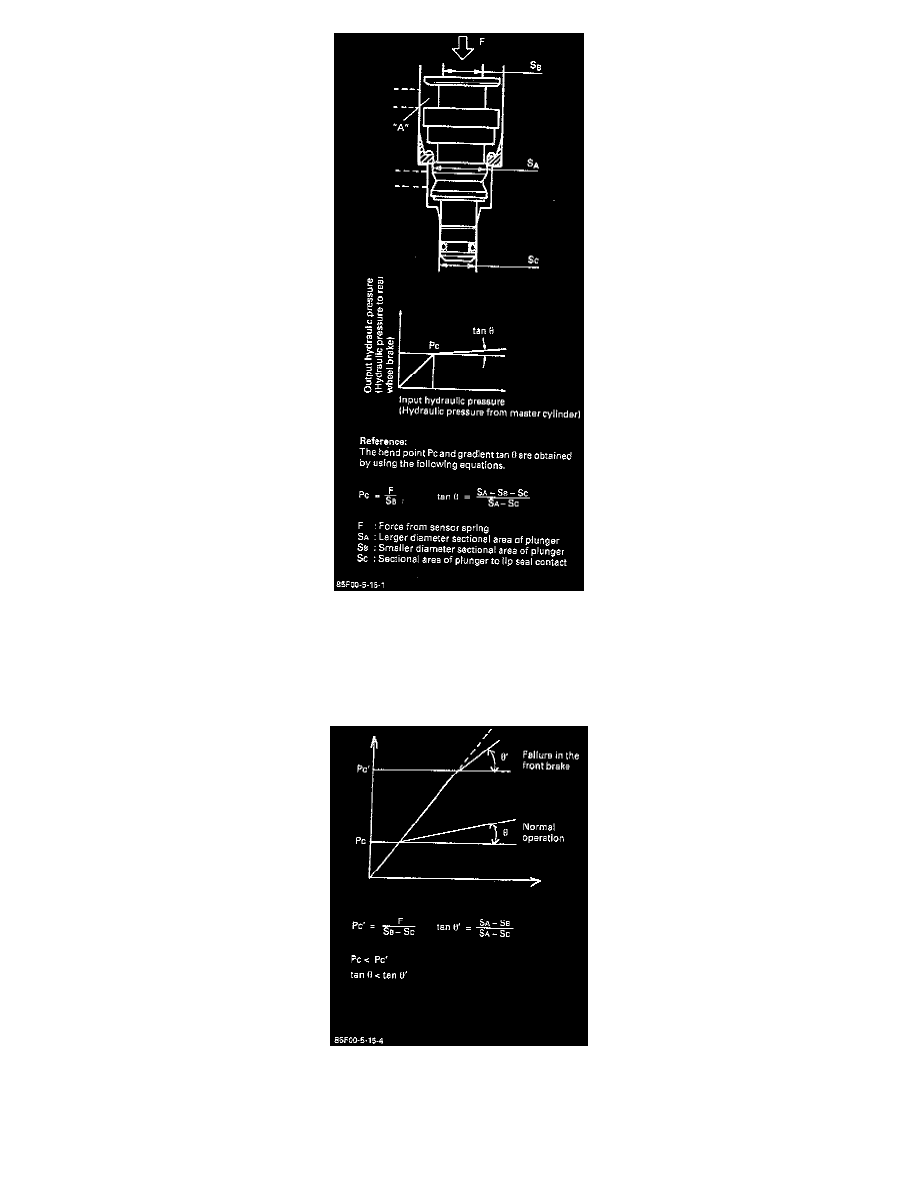Sidekick JS 2D Soft Top 2WD L4-1.6L (1997)

When LSPV at work
As the input hydraulic pressure increases, the force applied to the plunger grows stronger than the sensor spring force and moves the plunger upward
in the figure and as a result, the valve closes the fluid passage. Then the hydraulic pressure is represented by the bend point Pc in the graph.
As the incoming hydraulic pressure rises even higher, the hydraulic pressure "A" increases and pushes down the plunger, opening the fluid passage.
By repeating this operation (open/close), the valve controls the output hydraulic pressure (hydraulic pressure to the rear brake).
Therefore its characteristic is represented as a line with a certain gradient.
When fail-safe at work
When the hydraulic pressure is not applied to the front brake (secondary), the force to push up the plunger reduces by the amount corresponding to
that of the front brake. This means that in order for the plunger to operate, a higher than normal hydraulic pressure is required for the rear brake
(primary).
Thus, a hydraulic pressure exceeding the normal level is supplied to the rear brake (rear wheel cylinder).
